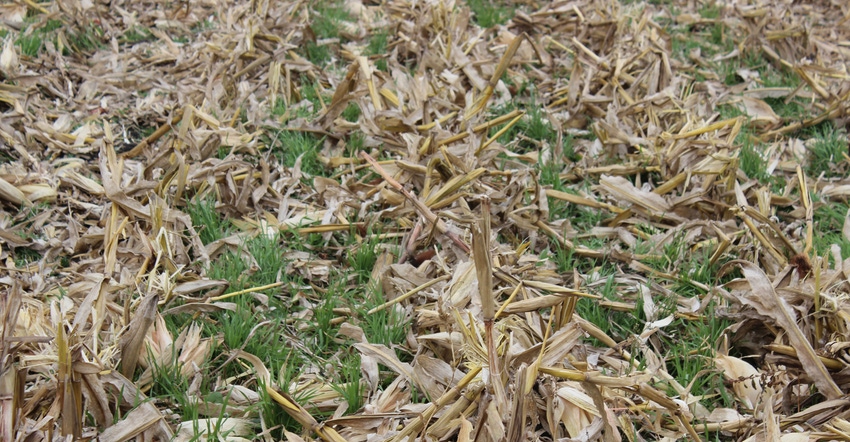June 22, 2021

Cover crops have grown in both interest and number of acres over the last decade. However, there is still room for more adoption of cover crops across Iowa and the Midwest. For anyone who is using cover crops or those who watch neighboring fields with cover crops, it comes as no surprise that using cover crops requires additional management. In just a few weeks, the cycle will begin for the next season of cover crop establishment, growth and termination. And as in many years, there will undoubtably be challenges.
Pros and cons
Grouping the decision of seeding method, seeding time and species together is a smart idea because each decision affects another. For the most part, Iowans are using winter (cereal) rye or oats while overseeding into the standing crop by the broadcast method with high-clearance equipment or an airplane. This is different from interseeding into the standing crop at early vegetative stages.
Overseeding into crops nearing maturity is much more reliable than interseeding into vegetative-stage crops. However, overseeding can still have its drawbacks. The timing of overseeding is everything. Seed too early, and the corn and soybean crops shade the cover crops too much. Soil moisture and rainfall patterns are critical. If it's too dry, the broadcast seeds will not germinate, as they are sitting on the soil surface. Additionally, overseeding does not provide the uniformity or seed-to-soil contact that is achieved with drill seeding following harvest.
Having pointed out these challenges with overseeding, I should also point out the benefits. The timing of overseeding comes when labor needs are not as demanding. The ideal timing of overseeding is the last week of August through the first week of September, assuming there is rainfall in the forecast or ample soil moisture. Because of an earlier seeding time, overseeded cover crops tend to have more biomass growth in the fall. Abundant biomass growth is key to reducing nutrient losses by either leaching or erosion. And if grazing is desired, more biomass results in fewer days on fed hay and grains.
Be flexible
When it comes to overseeding, while it is important to have a plan in place, it is also important to be flexible. Realize that crop development is strongly influenced by weather conditions. If growing degree day conditions continue to accumulate rapidly, the overseeding time frame could be earlier than the last week of August. When corn leaves fire up to the ear leaf or the soybean canopy is starting to yellow, it is an indicator it's a good time to overseed.
Timely rainfall is critical for cover crop germination. Be flexible if conditions are dry and rainfall is not in the short-term forecast. Rain probabilities increase going into September, which may lead to more successful cover crop establishment. While larger-seeded species such as cereal grains require more moisture for germination, they can establish well in a broadcast situation once they have enough moisture.
Assessing soil and weather conditions at the time of seeding can give you an indicator of what seeding rates should be targeted. Typically, overseeding requires a higher seeding rate — 60 to 70 pounds per acre — compared to drill seeding following crop harvest. This higher seeding rate is warranted, because lower germination rates are associated with dry soil surface conditions, minimal seed-to-soil contact, seed scavenging by bird and rodents, and poor light intensity from the crop canopy and residue. An additional seeding-rate adjustment should be made based on the percent pure live seed. Low PLS percentages should dictate a higher seeding rate.
More guidance on cover crop establishment considerations can be found in the Whole Farm Conservation Best Practices Manual, store.extension.iastate.edu/product/15823.
Licht is an Iowa State University assistant professor and Extension cropping systems specialist.
You May Also Like




